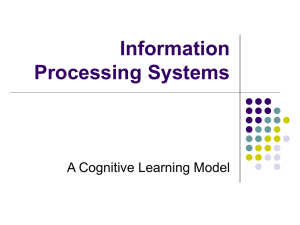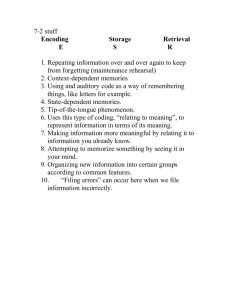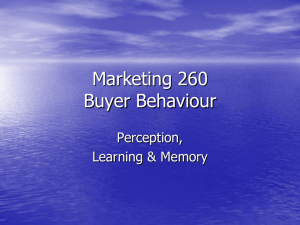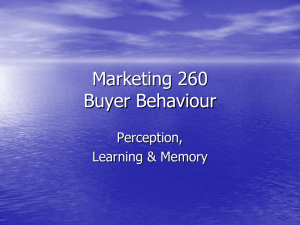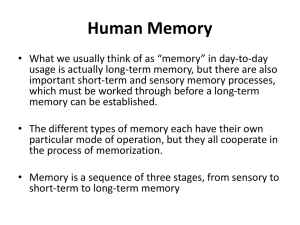Topic60-66
advertisement
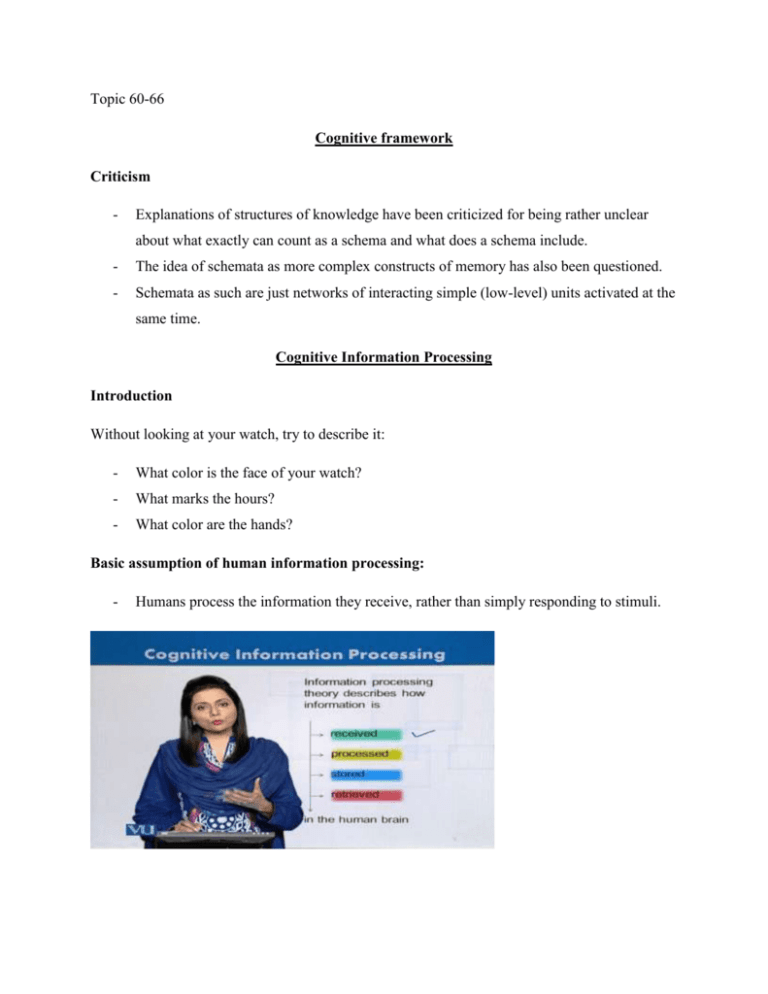
Topic 60-66 Cognitive framework Criticism - Explanations of structures of knowledge have been criticized for being rather unclear about what exactly can count as a schema and what does a schema include. - The idea of schemata as more complex constructs of memory has also been questioned. - Schemata as such are just networks of interacting simple (low-level) units activated at the same time. Cognitive Information Processing Introduction Without looking at your watch, try to describe it: - What color is the face of your watch? - What marks the hours? - What color are the hands? Basic assumption of human information processing: - Humans process the information they receive, rather than simply responding to stimuli. Cognitive Information Processing Conceptual Framework 1 Thinking The process of thinking includes the activities of: - Perception of external stimuli. - Encoding it, and - Storing the perceived and encoded data in one’s brain. Analysis of stimuli - This is the process wherein the encoded stimuli are altered to suit the brain’s cognition and interpretation process for decision making. Conceptual framework 2 Situational modification This is the process by which an individual uses his experience, (stored memories) to handle a similar situation existing now. Obstacle evaluation While evaluating the subject’s intellectual, problem solving and cognitive level: - Individual’s development level. - Nature of obstacle or problem. Information Processing Model Structure: Major components 1) Sensory register 2) Short-term memory (working memory) 3) Long term memory 1. Sensory Register - Each sensory system has its own sensory store, or sensory register, which receives and briefly holds all of the external and internal stimuli that it receives. - The sensory register stores sensory information long enough for unconscious processes to analyze it to determine whether the input should be brought into working memory, or discarded. 2. Short term/Working memory - It is the center of conscious thought (like the central processing unit CPU of a computer) where information from long-term memory and the environment is combined to help solve problems. 3. Long term memory - It is the stored representation of all that a person knows. - Items stored in long term memory lie “asleep” until they are called back into the working memory and thus put to use. - It has two components - Explicit memory: information you have to consciously work to remember. - Implicit memory: information remembered by you unconsciously and effortlessly. - Can last as little as a few days or as long as decades. - Subject to fading in the natural forgetting process. - Maintenance rehearsal (several recalls/retrievals of memory) may be needed to perseve long term memories.





